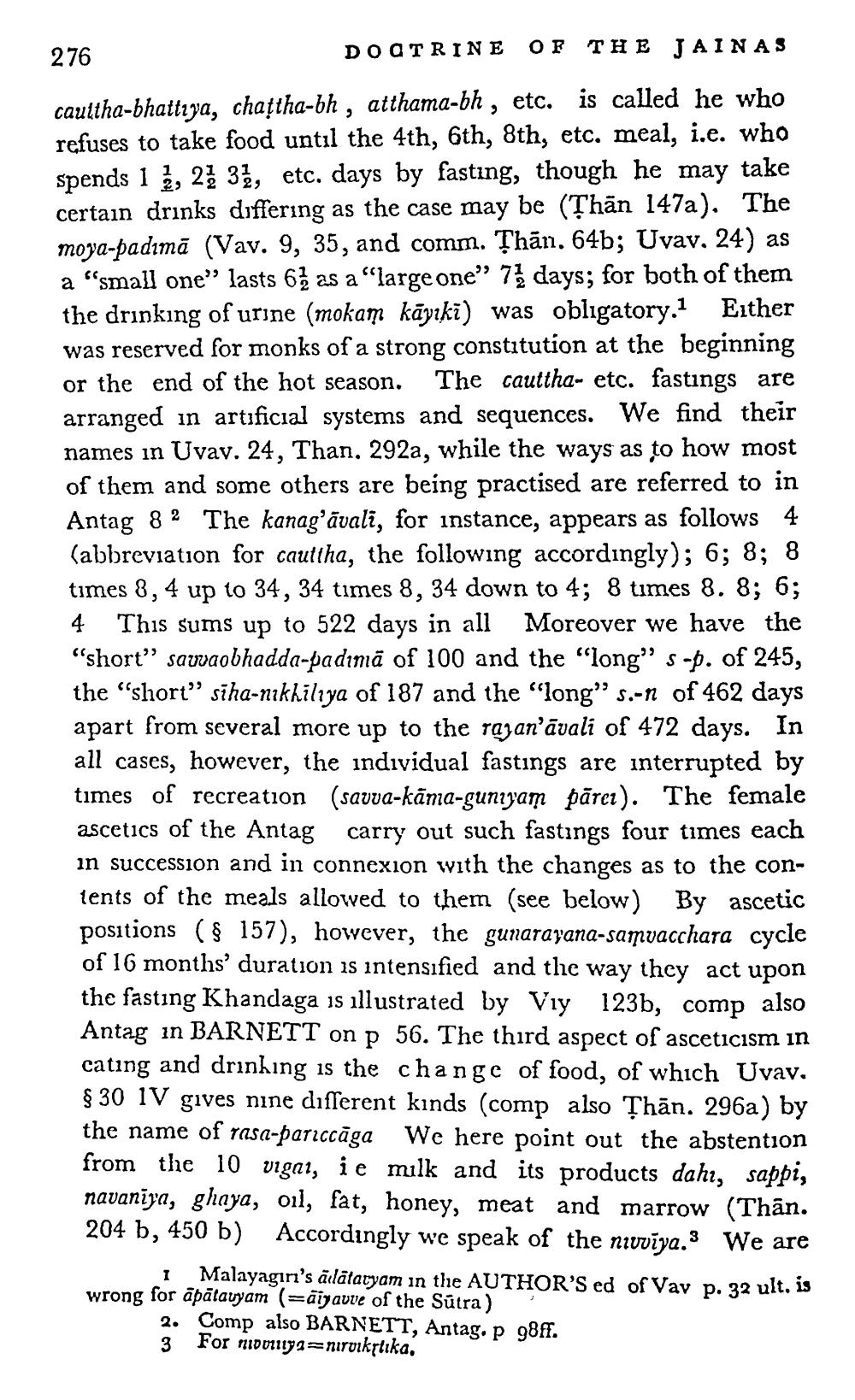________________
DOCTRINE OF THE JAINAS 276 cauttha-bhattıya, chattha-bh , atthama-bh , etc. is called he who refuses to take food until the 4th, 6th, 8th, etc. meal, i.e. who spends 1 , 22 37, etc. days by fasting, though he may take certain drinks differing as the case may be (Thân 147a), The moya-badımā (Vav. 9, 35, and comm. Thān. 64b; Uvav, 24) as a "small one" lasts 62 as a "large one" 7 days; for both of them the drinking of urine (mokam kāyıkā) was obligatory.1 Either was reserved for monks of a strong constitution at the beginning or the end of the hot season. The cauttha- etc. fastings are arranged in artificial systems and sequences. We find their names in Uvay. 24, Than. 292a, while the ways as to how most of them and some others are being practised are referred to in Antag 8 2 The kanag'āvali, for instance, appears as follows 4 (abbreviation for cauttha, the following accordingly); 6; 8; 8 times 8, 4 up to 34, 34 times 8, 34 down to 4; 8 times 8. 8; 6; 4 This sums up to 522 days in all Moreover we have the "short” sawaobhadda-padınā of 100 and the “long” s-p. of 245, the "short” siha-nikhiliya of 187 and the "long” s.-n of 462 days apart from several more up to the rajan'āvali of 472 days. In all cases, however, the individual fastings are interrupted by times of recreation (savva-kāna-guniyam pārei). The female ascetics of the Antag carry out such fastings four times each in succession and in connexion with the changes as to the contents of the meals allowed to them (see below) By ascetic positions (§ 157), however, the gunarayana-samvacchara cycle of 16 months' duration is intensified and the way they act upon the fasting Khandaga is illustrated by Viy 123b, comp also Antag in BARNETT on p 56. The third aspect of asceticism in cating and drinking is the change of food, of which Uvav. § 30 IV gives nine different kinds (comp also Thān. 296a) by the name of rasa-pariccāga We here point out the abstention from the 10 vigai, ie milk and its products dahi, sappi, navanīja, ghnya, oil, fat, honey, meat and marrow (Thān. 204 b, 450 b) Accordingly we speak of the nivvīya. We are
1 Malayagın's ādātaryam in the AUTHOR'S ed of Vav p. 32 ult. is wrong for āpātawyam (=āijavve of the Sutra)
2. Comp also BARNETT, Antag. p 98ff. 3 For mid11y1=niruiklika,




